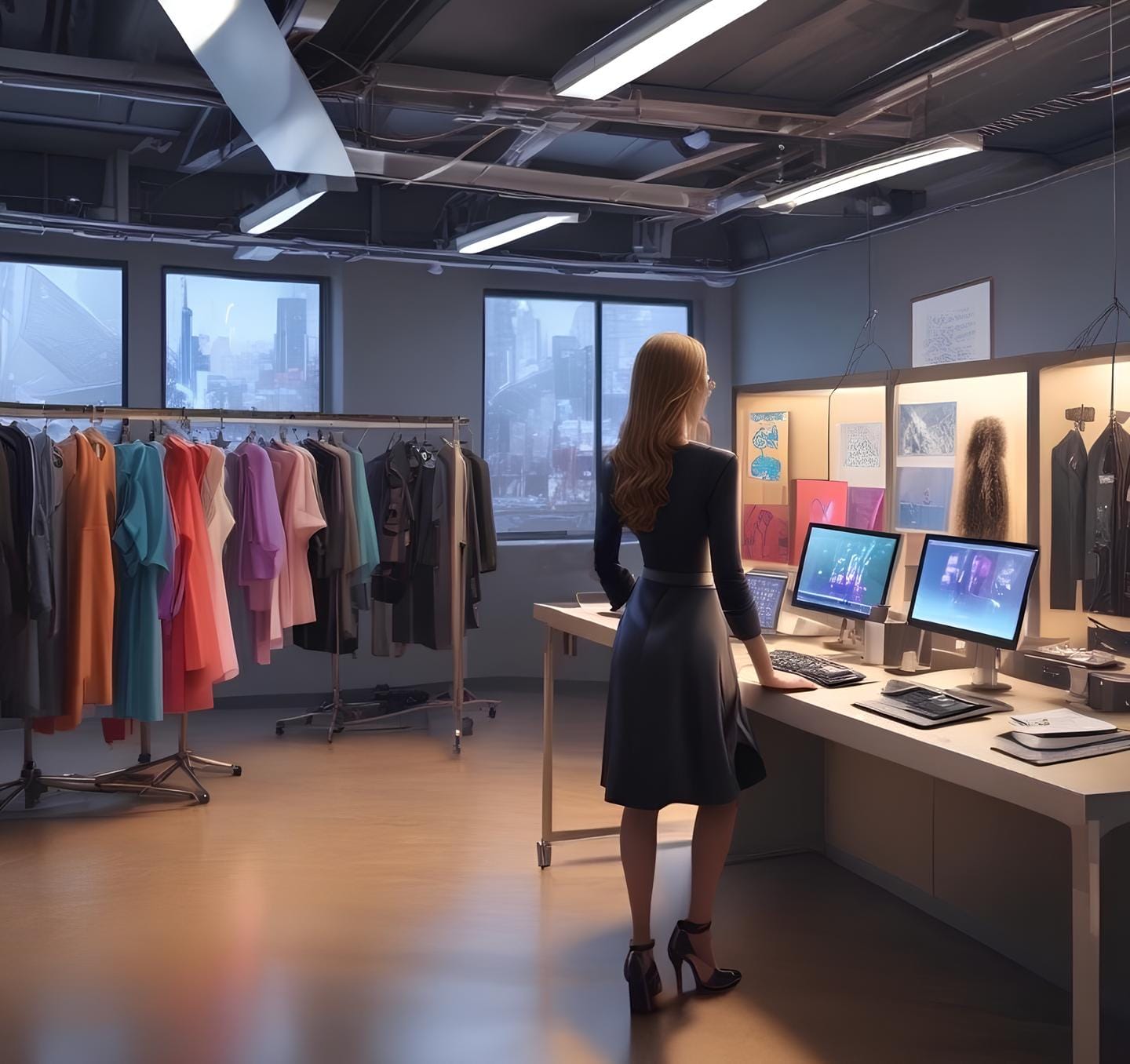
Fashion is rapidly evolving with technology, from digital e-commerce to the integration of real-time tech and 3D customisation, creating a more immersive shopping experience.
Transforming Shopping with Real-Time Tech and 3D Customisation
Real-time technology and 3D customisation are modernising the fashion industry, changing how customers shop and personalise their purchases. Real-time tech lets customers see and customise products instantly, making the shopping experience more interactive and enjoyable. According to Fibre2Fashion, real-time tech is making customer interaction more intuitive and engaging.
Customisation has always been important in fashion, and 3D technology takes it to the next level. 3D customisation tools let customers design clothing to their exact preferences, ensuring a perfect fit and unique style. As noted by ApparelMagic, customisation is becoming more crucial in modern fashion. Brands can now offer made-to-measure (MTM) and make-to-order (MTO) products using advanced 3D tools, changing how fashion is created and enjoyed.
Digital E-commerce: The New Norm
The shift towards digital e-commerce has redefined the fashion industry, enabling brands to offer more personalised and engaging online shopping experiences. The integration of advanced technologies like artificial intelligence, augmented reality (AR) where customers virtually try on clothes and accessories using their smartphones, ensuring the right fit and style, and virtual reality (VR) which allows customers to explore virtual stores and interact with products in a lifelike environment is transforming how consumers shop. These technologies allow customers to virtually see and try on products before making a purchase, enhancing satisfaction and reducing returns.
E-commerce platforms and digital marketplaces now provide a global reach, connecting brands with customers worldwide.
Digital Design and Virtual Prototyping
The traditional design process in fashion, which often involves numerous physical prototypes and lengthy iteration cycles, is being changed drastically by digital design tools and virtual prototyping. Software such as CLO 3D and Browzwear enables designers to create realistic 3D models of garments, allowing for rapid iteration and visualisation without the need for physical samples. This not only speeds up the design process but also reduces waste and costs associated with producing multiple prototypes.
AI and Machine Learning
Artificial intelligence (AI) and machine learning are transforming various aspects of the fashion industry, from design to customer service. AI-driven algorithms can analyse vast amounts of data to predict trends, optimise inventory management, and personalise the shopping experience.
- Trend Forecasting: AI can analyse social media, runway shows, and sales data to identify emerging trends, allowing brands to stay ahead and tailor their collections to meet the consumer demand.
- Inventory Management: Machine learning models can predict which products will be popular and optimise inventory levels accordingly, reducing overstock and understock situations.
- Personalisation: AI-powered recommendation engines enhance the shopping experience by offering personalised product suggestions based on individual preferences and browsing behavior.
Data-Driven Marketing and Customer Insights
Data analytics is transforming how fashion brands understand and engage with their customers. By leveraging big data, brands can gain deep insights into consumer behavior, preferences, and trends, allowing for more effective marketing strategies.
- Customer Segmentation: Advanced analytics enable brands to segment their customer base more precisely, allowing for targeted marketing campaigns.
- Predictive Analytics: Tools analyze historical data to forecast future trends and customer behavior, helping brands anticipate demand and optimize strategies.
- Customer Engagement: Social media platforms and digital marketing tools enable real-time customer engagement, allowing brands to tailor their messaging and campaigns to better align with customer expectations.
Sustainable Fashion Through Technology
Sustainability is a growing concern in the fashion industry, and technology is playing a crucial role in addressing this challenge. Innovations in materials science, production processes, and supply chain management are paving the way for more sustainable practices.
- Eco-Friendly Materials: Advancements in materials science have led to the development of sustainable fabrics such as bio-fabricated leather, recycled polyester, and organic cotton.
- 3D Printing: 3D printing technology enables on-demand production of garments and accessories, reducing waste and lowering the carbon footprint associated with traditional manufacturing processes.
- Supply Chain Transparency: Blockchain technology is being used to enhance transparency and traceability in the fashion supply chain.
Smart Textiles and Wearable Technology
The integration of technology into textiles is giving rise to smart fabrics and wearable technology that offer new functionalities and enhance the user experience. These innovations are changing fashion and expanding its applications into health, fitness, and everyday convenience.
- Smart Fabrics: Embedded with sensors and electronic components, smart fabrics can monitor various parameters such as body temperature, heart rate, and movement, making them ideal for sportswear and medical applications.
- Wearable Technology: Wearables such as smartwatches and fitness trackers offer functionalities ranging from health monitoring to mobile connectivity.
In conclusion, the future of fashion lies at the intersection of fashion and tech. With advancements in real-time tech, digital e-commerce, 3D customisation, and sustainable practices, the industry is poised for a revolution that will transform how we shop and experience fashion. As technology continues to evolve, the possibilities for innovation in the fashion industry are endless, promising a future where fashion is more personalised, interactive, and customer-centric than ever before.
